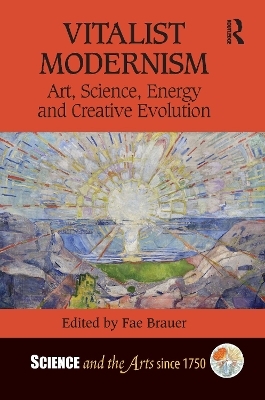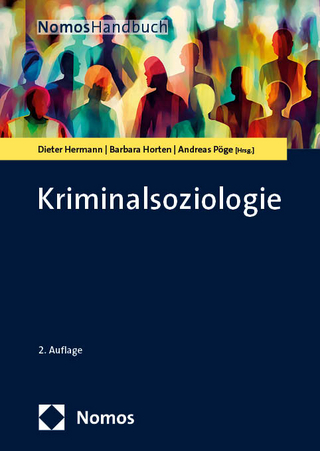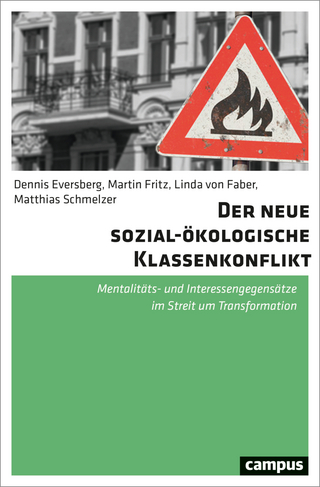
Vitalist Modernism
Routledge (Verlag)
978-0-367-49304-2 (ISBN)
- Titel z.Zt. nicht lieferbar
- Versandkostenfrei
- Auch auf Rechnung
- Artikel merken
This book reveals how, when, where, and why vitalism and its relationship to new scientific theories, philosophies and concepts of energy became seminal from the fin de siècle until the Second World War for such Modernists as Sophie Taeuber-Arp, Hugo Ball, Juliette Bisson, Eva Carrière, Salvador Dalì, Robert Delaunay, Marcel Duchamp, Edvard Munch, Picasso, Yves Tanguy, Gino Severini and John Cage. For them, Vitalism entailed the conception of life as a constant process of metamorphosis impelled by the free flow of energies, imaginings, intuition and memories, unconstrained by mechanistic materialism and chronometric imperatives, to generate what the philosopher Henri Bergson aptly called Creative Evolution.
Following the three main dimensions of Vitalist Modernism, the first part of this book reveals how biovitalism at the fin de siècle entailed the pursuit of corporeal regeneration through absorption in raw nature, wholesome environments, aquatic therapies, electromagnetism, heliotherapy, modern sports, particularly rugby, water sports, the Olympic Games and physical culture to energize the human body and vitalize its life force. This is illuminated by artists as geoculturally diverse as Gustave Caillebotte, Thomas Eakins, Munch and Albert Gleizes. The second part illuminates how simultaneously Vitalism became aligned with anthroposophy, esotericism, magnetism, occultism, parapsychology, spiritism, theosophy and what Bergson called "psychic states", alongside such new sciences as electromagnetism, radiology and the Fourth Dimension, as captured by such artists as Juliette Bisson, Giacomo Balla, Albert Besnard, Umberto Boccioni, Eva Carrière, John Gerrard Keulemans, László Moholy-Nagy, James Tissot, Albert von Schrenck Notzing and Picasso. During and after the devastation of the First World War, the third part explores how Vitalism, particularly Bergson’s theory of becoming, became associated with Dadaist, Neo-Dadaist and Surrealist notions of amorality, atemporality, dysfunctionality, entropy, irrationality, inversion, negation and the nonsensical captured by Hans Arp, Charlie Chaplin, Theo Van Doesburg, Kazimir Malevich, Kurt Schwitters and Vladimir Tatlin alongside Cage’s concept of Nothing. After investigating the widespread engagement with Bergson’s philosophies and Vitalism and art by Anarchists, Marxists and Communists during and after the First World War, it concludes with the official rejection of Bergson and any form of Vitalism in the Soviet Union under Stalin.
This book will be of vital interest to gallery, exhibition and museum curators and visitors, plus readers and scholars working in art history, art theory, cultural studies, modernist studies, occult studies, European art and literature, health, histories of science, philosophy, psychology, sociology, sport studies, heritage studies, museum studies and curatorship.
Fae Brauer is Professor Emeritus of Art and Visual Culture at the University of East London Centre for Cultural Studies Research; Honorary Professor of Art History and Art Theory at The University of New South Wales and a Commissioning Editor for the Rowman & Littlefield International Radical Cultural Studies Series. She is an elected Fellow of the Royal Society of Arts with an MA and PhD from The Courtauld Institute of Art, University of London.
Introduction, Vitalizing Energies, Creativity and Evolution Fae Brauer; PART I BIOVITALISM; Corporeal Regeneration, Environmental Purification and National Evolution; Chapter One The Manly Water Arts: Hygiene, Vitality and Virility at the fin-de-siècle, Anthea Callen; Chapter Two Edvard Munch and the Vitalized Bodies of National Science, Patricia Berman; Chapter Three « L’art et le muscle » : Robert Delaunay’s L’Équipe de Cardiff and Pierre de Coubertin’s Internationalist Vitalism, Pascal Rousseau; PART II OCCULTIST VITALISM; Magnetism, Parapsychology, Spiritism and Theosophy; Chapter Four Visualizations of the Vital-Psychic Force, Serena Keshavjee; Chapter Five Vitalist Picasso: Bergson’s Psychic States, Phantasmatic Luminescence and Occultist Cubism, Fae Brauer; Chapter Six Chromatic Futurism: Vitalist Responses to Cubism and Cinema, David S. Mather; PART III NEO-VITALISM; Absurdity, Dysfunctionality, Inversion and Socialism; Chapter Seven Was Dada Vitalistic? Brandon Taylor' Chapter Eight Henri Bergson and Surrealism: Art, The Vital Impetus and The Persistence of Memory, Donna Roberts' Chapter Nine Bergson, Creativity and the Vitalist Left: Egoism, Syndicalism, Communism, Mark Antliff; Chapter Ten, Revitalizing Traumatized Soviet Soldiers: Art, Psychology and "Creative Darwinism", Patricia Simpson; Bibliography
| Erscheinungsdatum | 04.08.2022 |
|---|---|
| Reihe/Serie | Science and the Arts since 1750 |
| Zusatzinfo | 38 Halftones, color; 38 Halftones, black and white; 38 Illustrations, color; 38 Illustrations, black and white |
| Verlagsort | London |
| Sprache | englisch |
| Maße | 174 x 246 mm |
| Gewicht | 840 g |
| Themenwelt | Kunst / Musik / Theater ► Allgemeines / Lexika |
| Kunst / Musik / Theater ► Kunstgeschichte / Kunststile | |
| Sachbuch/Ratgeber ► Sport | |
| Geisteswissenschaften ► Religion / Theologie | |
| Naturwissenschaften | |
| Sozialwissenschaften ► Soziologie ► Spezielle Soziologien | |
| ISBN-10 | 0-367-49304-7 / 0367493047 |
| ISBN-13 | 978-0-367-49304-2 / 9780367493042 |
| Zustand | Neuware |
| Informationen gemäß Produktsicherheitsverordnung (GPSR) | |
| Haben Sie eine Frage zum Produkt? |
aus dem Bereich


